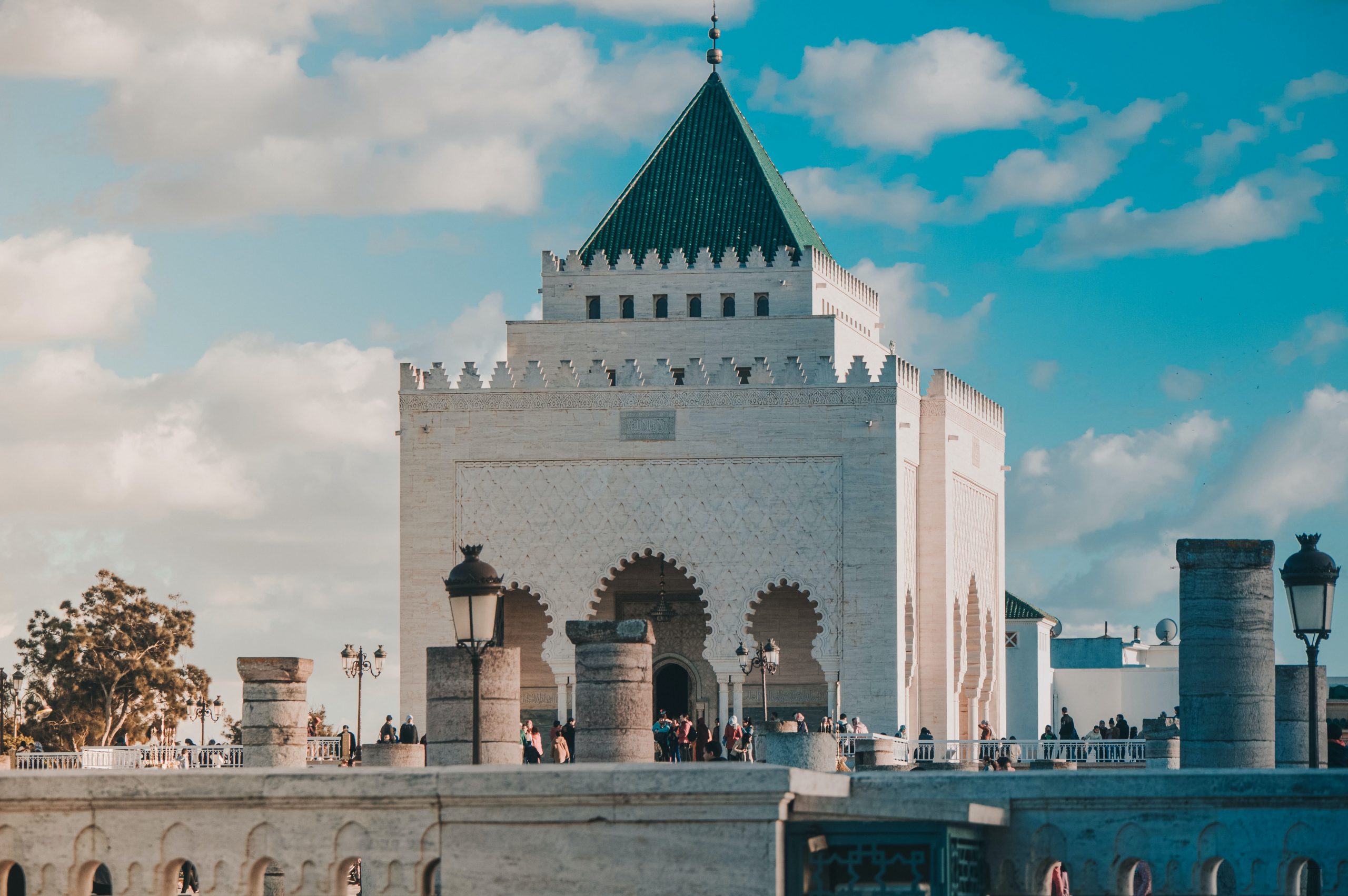Mausoleum Mohammed V
The Mausoleum
It is the mausoleum located in Rabat, next to the Hassan Tower and houses the tombs of King Mohammed V, his son the King Hassan II and his brother Prince Moulay Abdellah. It was build between 1961 and 1971.
The Mausoleum is an example of modern Arab-Muslim architectural style, making symbioses between the different traditional Moroccan/Moorish and Arab elements. It is surrounded by a large garden and is accessible to the public. It is one of the most important symbols of Moroccan history and culture. The Mausoleum is a place of pilgrimage for Moroccans and public personalities who visit Morocco.

King Mohammed V
Mohammed V, an important Moroccan leader. He played a key role in the history of Morocco and Africa. Sultan of Morocco from 1927 to 1953, then King of Morocco from 1957 to 1961. He is a symbol of the struggle for the independence of Morocco and Africa. Mohammed V is widely respected and admired for his commitment to peace and justice.
As Sultan, Mohammed V had to face pressure from the French occupiers to maintain the protectorate over Morocco. He resisted these pressures by establishing a policy of nationalism and social reform. He also protected his subjects, Jews and Muslims, against any discrimination coming from the protectorate regime, notably the Vichy regime. In addition, he supported demands for independence and decolonization of Africa. This resistance led to his captivity by the French from 1953 to 1955, but he became a symbol of the struggle for independence in Morocco and Africa. His release contributed to the end of the French protectorate over Morocco in 1956.
The Sultan knew the exile far from his country and then the triumphant return as king of the Moroccans. After a turbulent reign and a painful end, King Mohammed V left his horse to go to his eternal rest. He is buried in the Mausoleum after his death in the year 1961. The building is built to honor his memory.

King Hassan II
If King Mohammed V is the liberating figure of Morocco, King Hassan II is its modernizer. He succeeded his father to the throne after his death in 1961. He ruled the country for 38 years, making him one of the longest serving rulers in Morocco’s modern history.
According to some people, the reign of Hassan II experienced some authoritarian slippages. However, he also achieved feats. He improved Morocco’s international relations, particularly with the United States and the European Union. In addition the monarch participated in the modernization of the Moroccan economy and the improvement of infrastructure and public services. He also supported social reforms, such as education for girls and the promotion of entrepreneurship.
In 1999, King Hassan II was buried in the Mohammed V mausoleum, with his father. He is a national leader and a symbol of the continuity of the Alawite dynasty which has reigned since the 17th century.

